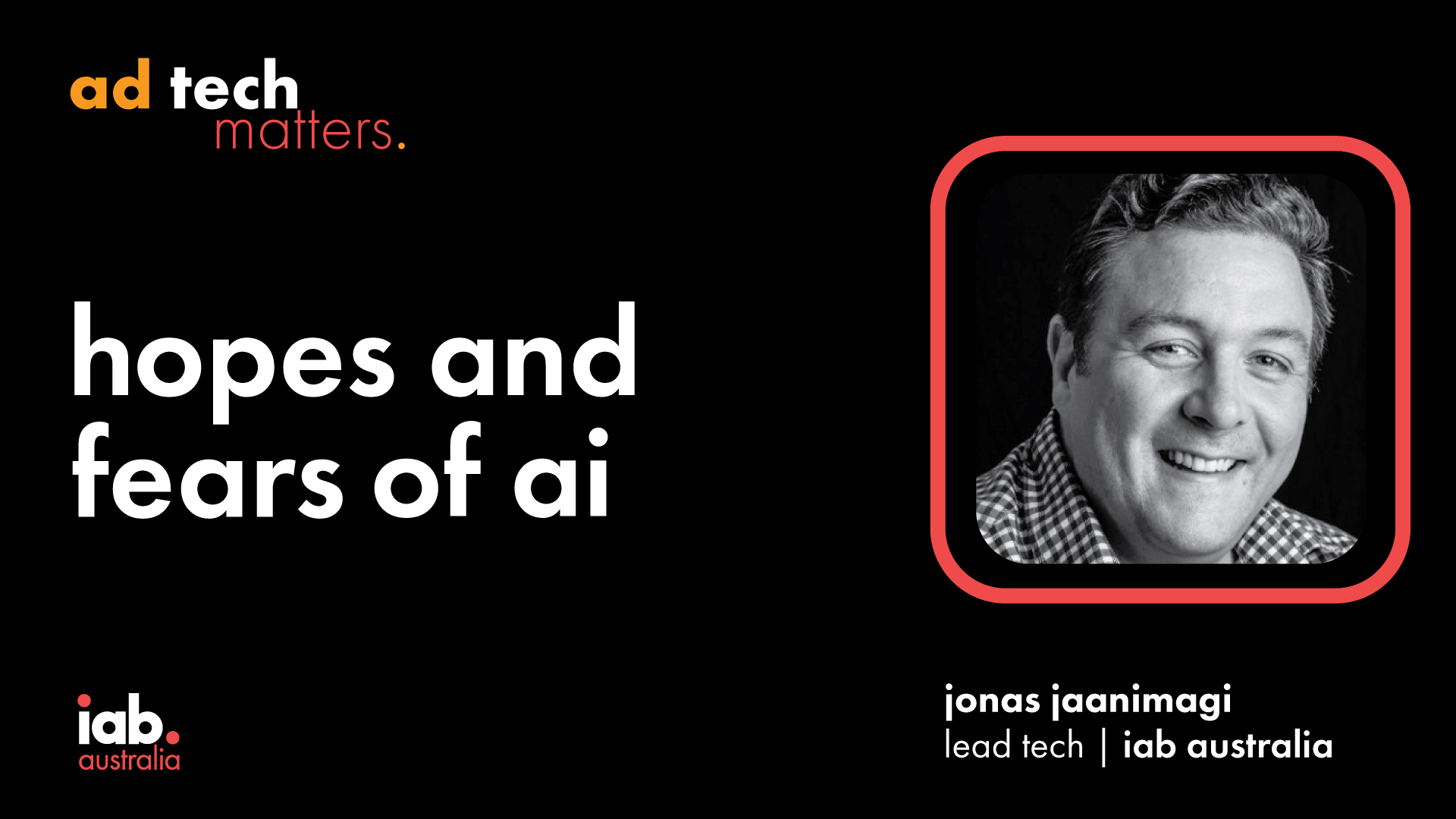Artificial Intelligence (AI) in Digital Advertising – Hopes and Fears
Introduction
Since the launch and ongoing improvements in ChatGPT, everyone is now experiencing for themselves how we have seen the evolution from Machine Learning and Natural Language Processing into artificial intelligence. This has resulted in machines having the ability to mimic or imitate human intelligent behavior and perform human-like tasks.
The GPT refers to ‘Generative Pre-trained Transformer’ and has quietly been the key to this evolutionary leap – as the bot has been pre-trained on enormous volumes of web and book data and then fine-tuned with human conversational examples through supervised learning and reinforcement learning from human feedback. This work has been ongoing since 2016:

To read the Google research from 2017 simply click here and for a fuller background on ChatGPT published by the parent company (OpenAI) upon its initial launch click here
As for this particular article, I’m keen to take a look at three potential opportunities and three potential challenges for how AI could impact our industry – under the topics of Hopes & Fears… we hope that you find it useful.
Hope #1 – Improving Efficiency & Effectiveness
There are a number of operational processes in both direct and programmatic advertising that are still being done (at times clunkily) by humans, but really should be managed by machines in my opinion. In the past I would often despair at the amount of time it took highly talented people to reconcile various reports and data outputs into an aggregated view for analysis. Way too often we were spending more time building the reports than we were analysing them, revealing the meaningful patterns contained therein and activating any resulting actionable insights.
AI’s core capability of crunching data at scale should dramatically improve the speed and resources required by humans for these types of tasks thereby enabling improved ad targeting, reducing ad fatigue, better executing dynamic creatives and ultimately maximising customer engagement.
The improvements should wash across all parts of the eco-system and ensure that advertisers can ultimately create more effective, fraud-free ad campaigns with higher engagement and conversion rates, whilst also being more efficient by reducing the time and resources required to setup and manage campaigns – including the advertising content.
This is not new in our industry – machine learning and tech ops teams have been enabling these types of capabilities for many years now, I just expect that AI can supercharge the capabilities and have a real impact on how we work and the levels of sheer operational grunt required.
On this point, many of my Ops colleagues would express their concerns for their jobs if a significant percentage of their time would be saved through innovation. My argument remains that tasks that can be done by machines, should be done by machines – freeing up humans to do the jobs that we should be doing. Roles will evolve and people have to be prepared to evolve their skills to embrace the resulting opportunities that will emerge, not resist them by clinging onto outdated processes and roles.
Fear #1 – Funding Future Quality Journalism
Playing around with the core functionalities of ChatGPT and seeing the scale of APIs and plug-ins makes me wonder if these interfaces soon become a form of one-stop-shop for daily digital interactions. This obviously has some existential implications for the current search experiences as they are now, as these services remain a popular starting point for so many.
However, should there be less traffic across written content as users rely upon AI generated content to aggregate and summarise content from websites in its responses – this would result in there being less monetisable attention for digital advertising as we know it. Video content may remain more difficult for crawlers to access and aggregate and less useful to include in written responses, I would assume – but written content could soon experience some genuinely seismic shifts.

As a result of reduced traffic, online news outlets would most likely have to experience lower ad revenues. Advertisers may start shifting their ad spend away from the open internet into platforms and apps that block AI crawlers and bots – and publisher strategies may ultimately have to evolve more completely towards paywalls and subscriptions. This could result in a significant loss of revenues for traditional publishers, making it more challenging for them to invest in high-quality journalism and maintain their operations. Additionally, the ability for smaller media owners to launch and thrive in such an environment makes it difficult to predict a healthy future for diverse online written content, generated by humans and providing the broader breadth of independent news, views and perspectives that remain so important.
Furthermore, AI-generated content has the potential to compete directly with traditional journalism as the algorithms become more sophisticated. AI bots may soon be able to generate news stories and articles that are indistinguishable from those written by human journalists, putting additional pressure on the craft of professional journalism and news media as we know it.
Hope #2 – Genuinely Meaningful Personalisation
Personalised experiences remain a core requirement for consumers and we have been slightly obsessed by this topic as an industry for some time now. Some have argued that elements of our industry have taken the 1:1 relationship too far, and now consumer privacy concerns have rightly reminded us of our collective responsibilities. That said, the benefits of executing personalisation competently (and responsibly) is well known, but too often the poor experiences of badly executed re-targeting and a lack of care for brand safety have been more prevalent than we would prefer.
The hope for me in this area is that because AI can analyse vast amounts of data at scale we can use both deterministic but also probabilistic signals to safely create better detailed, yet anonymised, profiles and more accurately predict potential interests and behaviour. Through goal-directed adaptive behaviours AI can empower advertisers to real-time target and optimise ads more precisely to those users most likely to be interested in their products or services – increasing the relevance and effectiveness of the ads and reducing wastage. The consumer experience is improved as ad fatigue can be reduced by AI adjusting the ad frequency or switching to a different ad format or messaging based upon user behaviours and engagement.
Added to this, predictive modelling and better forecasting will help advertisers optimise their ad campaigns in advance, reducing ad spend waste, improving ROI, and staying ahead of competition. By analysing user behaviour and engagement with ads, AI-powered algorithms will better identify patterns and trends to make data-driven decisions about ad campaigns and automate line items within strategies in DSPs.
Language models like ChatGPT will also have the potential to enhance personalisation by analysing user behaviour and preferences and generating natural language. This could allows brands to offer better customer support and online services more seamlessly, and engage more meaningfully with their customers by making their experiences more useful in their everyday lives.

If we could genuinely enhance this area and through more privacy-safe processes, the industry could at last leverage the benefits of capabilities that we have aspired to for so long but not really executed with excellence at scale as yet.
Fear #2 – Killing Human Creativity
We’ve looked at how ad creative processes could be enhanced via AI, at least from an operational perspective. I do however have a nagging fear that we may increasingly see mediocre creative executions that are effective in a formulaic manner but not particularly exciting as they lack the essential ingredient of human spark at their core.
Perhaps it’s nostalgia (although if you read any of Dave Trott’s blogs he also agrees) that some modern advertising campaigns simply lack a bloody good idea. No amount of beautiful creatives and delivery optimisation can truly make a success of a bad concept. If the machines become too prevalent there seems to me to be a risk of reducing further the emotional intelligence and very human traits like curiosity and humour often required to really make really good campaigns grab hold and have a meaningful impact.
That said, some of the examples we are seeing of AI art and from accessible solutions such as OpenAI’s DALL·E 2 are genuinely astonishing. For instance, an AI-generated piece of work called the Théâtre D’opéra Spatial took first prize at a State Fair in the US last year:

Whilst this is a beautiful output, in my personal opinion, it’s concerning that machines are starting to generate human emotions from AI-generated images and art – as we may come to rely upon them too much and kill off the unique human intuitions for creativity that may be more important in advertising than we currently realise. This reduction in diversity and originality in advertising could result in a decline in consumer engagement and interest, and ultimately spend.
Hope #3 – Supporting Sustainability
Sustainability will be a major topic for our industry over the next 12-18 months. We’re slowly now realising that there are significant emissions from many of the associated practices and processes we leverage in the day-to-day activities of delivering ad experiences to consumers across an increasing plethora of connected devices. Industry is now working hard to become more efficient (through efforts such as the IAB Australia Sustainability Working Group) and I’m hopeful that AI will play some part in helping us to reach our aims in this area by helping to reduce computational effort, and minimise emissions in digital advertising in a number of different areas. The only proviso ironically being that we’d have to ensure that the resulting emissions generated by the efforts of the AI software are also being responsibly managed and minimised.
I expect AI to build-upon the past efforts of machine learning and increasingly be leveraged to assist in auto-optimising ad campaigns by identifying the best-performing ad creatives, targeting options, and bidding strategies. Through AI-powered algorithms buyers will better analyse performance data in real-time and improve campaign efficiencies. Aligned to this is the opportunity for improved delivery practices by predicting the optimal moments and platforms for displaying ads based upon user behaviours and preferences. Algorithms should soon help to ensure that ads are more frequently delivered to the right users at the right time, negating the need for excessive ad impressions and any related unnecessary computational effort.
A starting point for our Sustainability Working Group has been to look at ad assets and the associated file sizes received and being delivered through the various ad pipes. Via smarter automated file compression practices AI can be used to help compress and optimise ad assets, thereby reducing the size and resource requirements demanded by different ad assets. This will help to minimise the amount of energy needed to deliver ads and reduce any emissions associated with serving them to users. A common example of this for both video streaming and video ad delivery is known as ‘adaptive streaming’, which can dynamically vary the quality of the video or audio streams being delivered based upon variables such as internet connection speeds and device capabilities.
Also, empowering buyers with much smarter bidding will enhance bidding strategies in real-time, to ensure that DSPs are bidding more efficiently and fully leveraging SPO (supply-path optimsation) strategies. Using machine learning algorithms to better analyse bid performance data, AI can adjust bids dynamically to ensure that advertisers are efficiently achieving the very best possible ROI.
Overall, the use of AI in digital advertising can help to reduce the computational effort needed to manage ad campaigns, better optimise ad delivery, and minimise carbon emissions associated with serving ads to consumers.
Fear #3 – Unemotional Intelligence
There are increasing ethical concerns related to the use of AI-powered language models as there is some risk that digital advertisers could leverage the capabilities to create highly deceptive or manipulative ad campaigns that aggressively exploit vulnerable, misinformed or gullible consumers.
The capabilities could also heighten privacy concerns of any user data that can be accessed and not competently protected would be leveraged to create highly personalised ads without consumer consent. These practices may take some time to unravel and protect against if there is not decent regulation in place combined with effective methods of real-time qualitative monitoring.
Ad fraud remains a core concern as replicating human behaviours and actions through non-human bots becomes increasingly sophisticated. An arms race is already being waged in this area between criminals and verification software vendors and there are concerns that the proficiencies in this area will now dramatically increase. How we can become more proactive in minimising the related risks and limiting the impact of AI on the ease and prevalence of sophisticated ad fraud will become an obligation – and my hope related to this is that AI can instead become a more meaningful part of the solution rather than the problem.
Interestingly, the most recent version of OpenAI’s chat bot (GPT-4) is such a leap forwards that concerned experts (including Elon Musk & Steve Wozniak) have created an open letter and petition to pause for at least 6 months the training of AI systems more powerful than GPT-4. To read this letter simply click here

Another hot topic is the concept of ‘fairness’ in AI and the efforts required to correct any algorithmic bias in related automated decision processes.
For instance, recommendation algorithms used by ad platforms, social media and e-commerce platforms can perpetuate biases by reinforcing existing patterns of behaviours and interests – potentially leading to a lack of diversity and homogeneity in user behavior. Also, language bias in NLP (natural language processing) algorithms may contain biases based upon the language data they are trained on, resulting in inaccurate or discriminatory outcomes when processing language from different cultures or demographics.
For an interesting perspective on the topic of AI-driven discrimination please follow the link below to an article on the UK ICO’s website.
